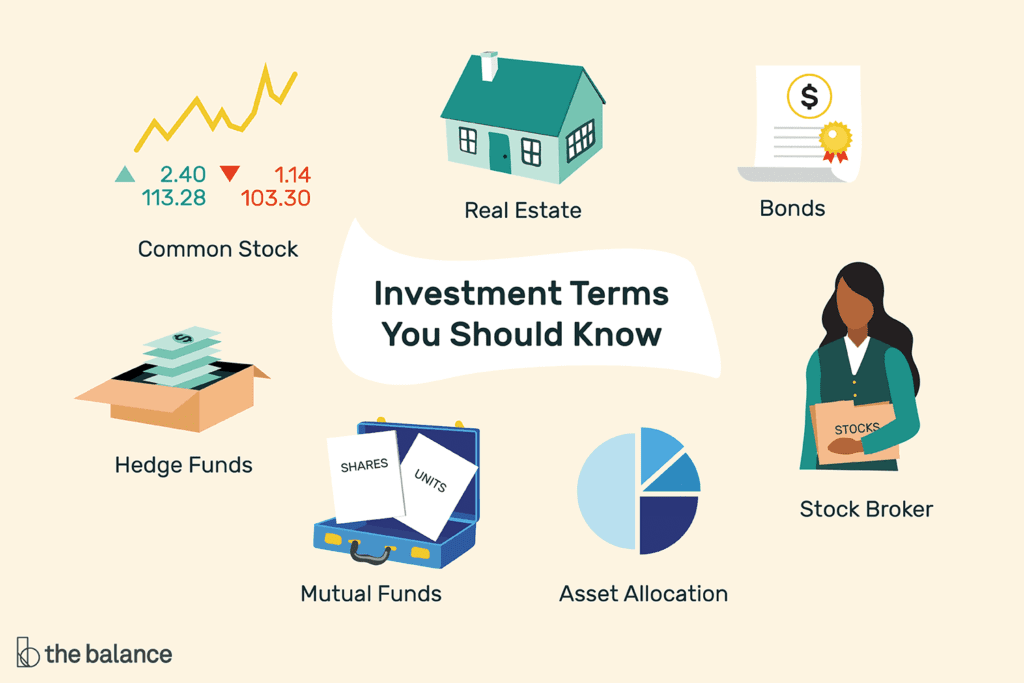If you want to live well in your later year, you better start investing the little you have as early as possible. This will give it time to earn interest and get to a substantial amount that can sustain you in old age. It may seem like a daunting practice, but you will get over the fear and enjoy the process with time.
There are many investment opportunities out there, and with a bit of research and due diligence, you will be on your way to creating wealth. We’ve compiled this guide to help you learn everything you need to know about investing for beginners.
Factors to Consider Before Starting Your Investment Journey
Investing is a personal choice, and because it involves risks, you must be smart when making your decision. Investing is not a straightforward venture, so you cannot start investing because you feel like it. Before you start investing, you must make sure that your financial situation is stable, especially if you invest in risky ventures.
This is because you may win or lose; therefore, consider the following factors before starting your investment journey.
- Ensure you have an emergency fund
Before you invest, ensure you have an emergency fund to cater to your expenses for a maximum of six months. The money should be in an accessible account because emergencies do not knock, and they can happen at any time. So, having the cash to deal with them in real-time will save you a lot of headaches.
Also, you will not have to sell your stock at a low rate to deal with an emergency, such as school fees or hospital bills. If you don’t have one, create one as soon as possible and start depositing money in the account.
- Start by paying off high-interest debts
We all start somewhere, and debt is part and parcel of developing financially. However, if you want to create wealth through investment, you must begin by paying off debts with a higher interest rate than the returns from your investment.
This is because the debt sucks off the little you make. So it would be best to pay off the high-interest debt to increase your investment portfolio.
Read Also: How to get out of debt fast
- Age
Although you can start investing at any age, the earlier, the better, with long-term investment, the earlier you invest your money, the more time it has to grow. For instance, suppose you are 30 years old, and the retirement age is 65, meaning that you have 35 years to create wealth that can sustain you in old age.
People above 25-30 years can play with long-term investments with a higher risk, such as stocks. This is because you have time to wait for the stocks price to fluctuate to a point where you feel it’s okay to cash in.
However, If you are close to your retirement age, you can not risk long-term investment. You are better off with safe and steady investment options, especially those that involve dividend payments.
Read Also: Investing for Retirement: The Complete Guide
- Compound interest
When you start investing in your 20s, you are lucky because compound interest allows you to start earning money as soon as possible. For instance, if you are 25 years and you can manage to save up to $5000 per annum for investments, at 65 years, you will be having $200,000 if you just saved the cash. But if you invested the money in a venture with a return of 7% per annum, you will be having $1,068,048.
Now imagine if you increase your contributions by a certain amount every month. You will have even more money. So, do not wait till you have the $5000; you can start with as little as $50 and increase the amount as time goes by and take advantage of compounding.
Note that investing is risky, so you should only invest the money you will not need in a few months. Consider hiring a financial advisor to keep an eye on your portfolio.
A Step-By-Step Process of Investing
- What type of investor are you?
Before you start investing, you must decide how you want to invest. You can either do it yourself, hire a professional, or use a robot advisor. All in all, choose carefully because this step can make or break you.
- Do-it-yourself
Determining your goals for investing is crucial in this step because you will know the duration and where to place your money. You do everything by yourself, from research, due diligence, and keeping track of your portfolio.
This can be a tad time-consuming and overwhelming, but you will love it once you get the hang of it. The good thing is you have total control of what to add to your portfolio.
If you want to invest in stocks, find a stockbroker and open a brokerage account, this will open the way for you to start buying and selling stocks. Make to choose only the best stock brokers in the market.
- Robo advisor/Passive investing
This is best for people with busy careers who do not have to analyze and decide where to place their capital. The best place to invest in mutual funds or exchange-traded funds is by using a Robo advisor. So how does this work?
There are investment platforms where you are asked a few questions about your investment goals and how much you are willing to invest. This gives them an idea of how you want your money handled and where to invest it.
Robo advisor is the best starting stage for beginner investors
- Hire a professional
With a professional’s advice, you can choose where to put your money. They have more experience in this industry, thus saving you the time you used to do research and due diligence. They also give you helpful insight that allows you to make winning investments and avoid losses.
Remember, you need to have your own broker’s account even while others do all the research.
- Choose your investment options
You must understand your investment options and the risks involved before investing. These include:
- Bonds
A bond is a loan you give to a company or a government entity, of which they agree to pay you back in a few years with interest. They are less risky than stocks because you are sure that your principal will be paid back with interest after a few years, as agreed in the contract.
Compared to stocks, bonds earn lower long-term returns. So, ensure that only a small part of your portfolio is in bonds.
- Stocks
Also known as equities or shares you own in a company. Stocks have a share price, which investors use to buy. Depending on the company, the share price can range from single digits to several thousand. You can purchase stocks through mutual funds. But, note that the riskiness in stocks varies with each company.
For instance, a younger company might be riskier, while a stable company could also be at risk of bankruptcy due to sudden happenings. So do your research and due diligence before committing.
Read Also: How to invest in the stock market
- Real estate
This is where you purchase a physical property like a piece of land or building, and because they appreciate it and a few years, they may be worth double or triple your purchase price. Note that real estate requires a lot of time and money commitment.
Related Article: How to invest in real estate
- Cash
This is the safest investment because you just need to place the cash in a high-interest-paying savings account. The good thing about cash investment is that the value of your money does not depreciate even during inflation, making it a good investment option to expand your cash reserves.
- Mutual Funds
This type of investment allows you to purchase a diverse collection of a mix of several investments packaged together. As an investor, you skip the process of picking individual stocks and bonds. The diversification in mutual funds makes the investments less risky compared to individual stocks.
You can hire a professional to manage your portfolio, or you can follow a specific market index. If you have a 401(k)s, you are in luck because most offer a curated selection of mutual funds, and you can invest as little as you want.

- Establish an investment strategy
If you want to be a successful investor, you must have an investment strategy. These include:
- Impact investing: involves investing in a company that contributes to environmental and charitable causes.
- Growth investing: Involves investing in companies that show signs of exponential growth.
- Income investing: Investing in ventures that pay dividends.
- Small-cap investing: Investing in new and small companies that show promise of growing faster.
- Value investing: Involves investing in big companies when their share price is lower than usual.

